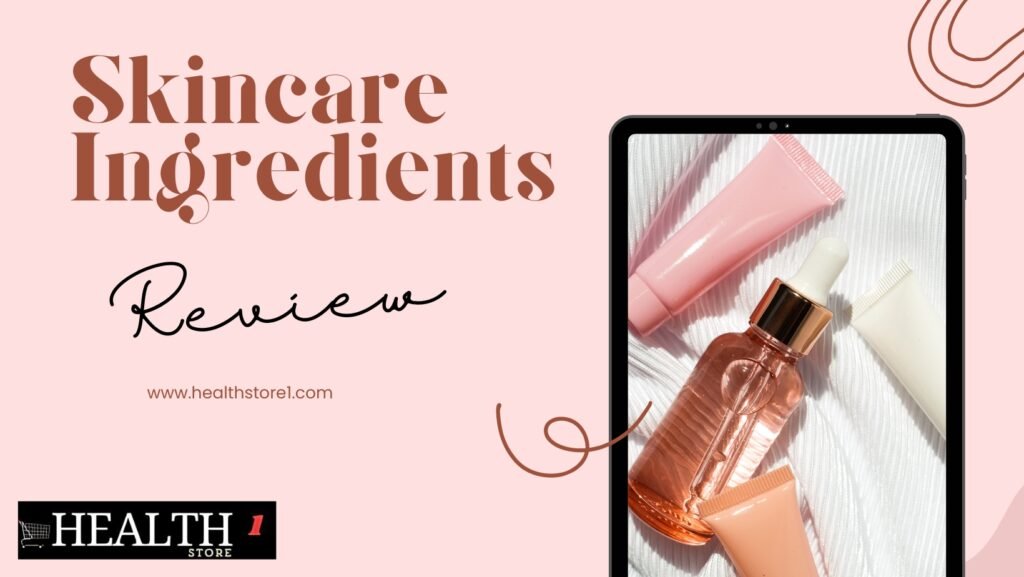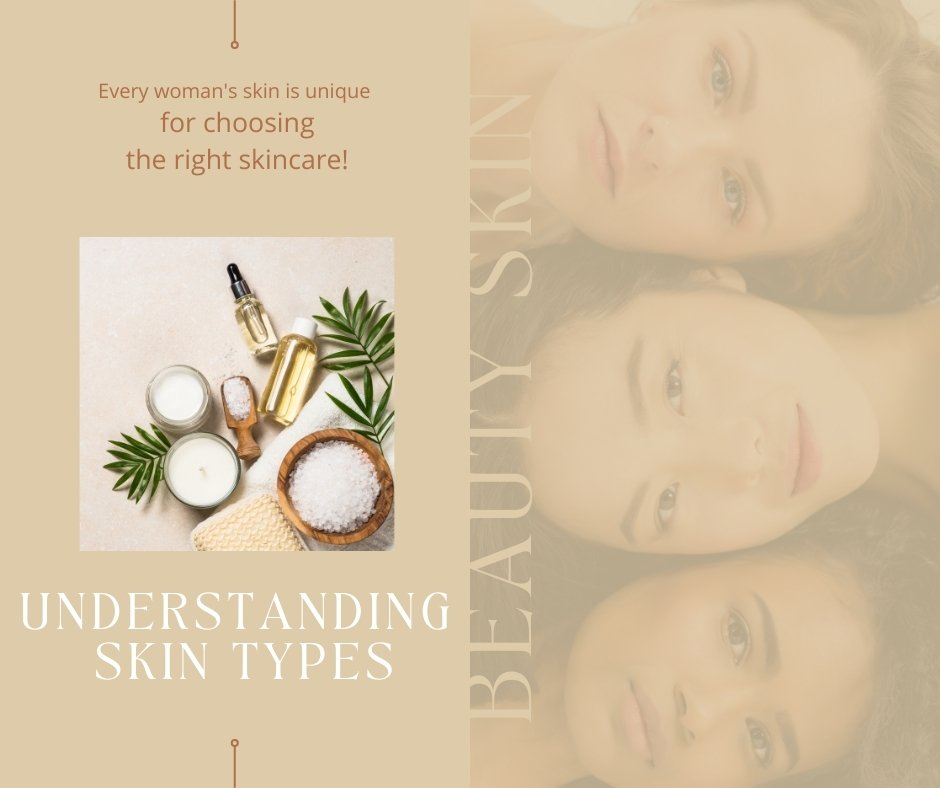Introduction to Skincare Ingredients
Understanding what goes into your skincare products is crucial for making informed choices that benefit your skin’s health and appearance. In this article, we’ll break down the essential ingredients to look for and those you might want to avoid, helping you craft a skincare routine that meets your needs and avoids potential pitfalls.
Table of Contents

The Importance of Reading Skincare Ingredients
Why Ingredients Matter:
- The effectiveness and safety of skincare products largely depend on their ingredients. What you apply to your skin can affect not only your appearance but also your overall health. Some ingredients provide essential benefits, while others can cause irritation, allergies, or long-term damage.
- With the rise of clean beauty and consumer awareness, more people are paying attention to what’s in their skincare products. Understanding these ingredients can help you avoid harmful substances and choose products that align with your skin type and concerns.
Common Misconceptions:
- Not all “natural” ingredients are safe, and not all “chemical” ingredients are harmful. It’s important to look beyond marketing buzzwords and focus on the actual impact of each ingredient on your skin.
| Term | Misconception | Reality |
|---|---|---|
| Natural | Always safe | Some natural ingredients can be irritating |
| Chemical | Always harmful | Many chemicals are safe and effective |
| Hypoallergenic | Suitable for all sensitive skin types | Can still cause reactions in some individuals |
Skincare Ingredients to Look For
Hyaluronic Acid:
- Function: Hydration powerhouse that attracts and retains moisture in the skin.
- Benefits: Helps to plump the skin, reduce the appearance of fine lines, and improve skin elasticity. Suitable for all skin types, especially dry and aging skin.
Niacinamide (Vitamin B3)
- Function: Multi-tasking ingredient that strengthens the skin barrier, reduces inflammation, and regulates oil production.
- Benefits: Helps with acne, rosacea, and hyperpigmentation. It also improves skin texture and tone, making it ideal for both oily and sensitive skin types.
Vitamin C (Ascorbic Acid):
- Function: powerful antioxidant that brightens skin, reduces signs of aging, and protects against environmental damage.
- Benefits: Improves skin radiance, reduces dark spots, and supports collagen production. Best used in the morning to protect against UV damage.
Retinol (vitamin A):
- Function: A derivative of vitamin A that speeds up cell turnover, reduces wrinkles, and fights acne.
- Benefits: Proven anti-aging ingredient that improves skin texture, reduces fine lines, and clears pores. Suitable for nighttime use due to its potency and potential to cause sun sensitivity.
Sunscreen (SPF):
- Function: Protects skin from harmful UV rays that cause aging, hyperpigmentation, and skin cancer.
- Benefits: Essential for preventing sun damage and maintaining healthy skin. Look for broad-spectrum sunscreens with at least SPF 30.
| Ingredient | Function | Key Benefits |
|---|---|---|
| Hyaluronic Acid | Hydration | Plumps skin, reduces fine lines |
| Niacinamide | Barrier support, oil regulation | Improves texture, reduces inflammation |
| Vitamin C | Antioxidant, brightening | Reduces dark spots, supports collagen |
| Retinol | Anti-aging, cell turnover | Reduces wrinkles, clears pores |
| Sunscreen (SPF) | UV protection | Prevents sun damage and skin cancer |
Skincare Ingredients to Avoid
Parabens:
- Function: Preservatives used to extend the shelf life of products.
- Concerns: Linked to hormone disruption and breast cancer, though the evidence is still debated. It’s best to avoid products with parabens, especially if you have sensitive skin.
Sulfates (e.g., Sodium Lauryl Sulfate):
- Function: cleaning agents that create lather in products like shampoos and facial cleansers.
- Concerns: Can strip the skin of its natural oils, leading to dryness, irritation, and worsening of skin conditions like eczema.
Phthalates:
- Function: Used to make products more flexible and to help fragrances last longer.
- Concerns: Associated with endocrine disruption and potential reproductive harm. Phthalates are often hidden under “fragrance” on ingredient lists, making them tricky to identify.
Fragrance:
- Function: Added to skincare products to create a pleasant scent.
- Concerns: Fragrances can cause allergic reactions, irritation, and sensitization over time. For those with sensitive skin, it’s best to choose fragrance-free products.
Alcohol (Denatured Alcohol):
- Function: Often used as a preservative or to help products penetrate the skin.
- Concerns: Can be very drying and irritating, especially for those with dry or sensitive skin. Overuse can lead to compromised skin barrier function.
| Ingredient | Function | Concerns |
|---|---|---|
| Parabens | Preservative | Potential hormone disruption |
| Sulfates | Cleansing agent | Strips natural oils, causes irritation |
| Phthalates | Plasticizers, fragrance stabilizers | Endocrine disruption, reproductive harm |
| Fragrance | Scent enhancement | Allergic reactions, skin irritation |
| Alcohol | Preservative, penetration enhancer | Drying, irritating, barrier damage |
Understanding Skincare Ingredients Label
The Order of Ingredients:
- Ingredients on skincare labels are listed in descending order by weight. This means that the first few ingredients make up the majority of the product. Active ingredients that are effective at lower concentrations, like retinol or hyaluronic acid, may appear further down the list but still be effective.
Recognizing Problematic Ingredients:
- Be cautious of long lists of chemicals, especially when the function isn’t clear. Ingredients like “fragrance” can be a catch-all term for hundreds of undisclosed chemicals. Similarly, preservatives like parabens or formaldehyde-releasing agents can be problematic, especially with long-term use.
Clean Beauty and Natural Ingredients:
- Clean beauty has become a popular trend, with many consumers opting for products free from synthetic ingredients. However, “natural” doesn’t always mean safer or better. Some natural ingredients can be irritating or cause allergic reactions. It’s important to focus on the efficacy and safety of the ingredients rather than whether they are natural or synthetic.
| Ingredient Placement | Interpretation |
|---|---|
| Top of the List | High concentration, primary ingredient |
| Middle of the List | Moderate concentration contributes to product function |
| Bottom of the List | Low concentration, often preservatives or fragrances |
How to Choose the Right Products
Know Your Skin Type:
- Understanding your skin type is key to selecting the right products. For example, oily skin may benefit from lightweight, non-comedogenic products, while dry skin needs richer, more hydrating formulas.
Patch Testing New Products:
- Always perform a patch test when introducing a new product into your routine. Apply a small amount of the product to a discreet area of your skin and wait 24-48 hours to see if any irritation or allergic reaction occurs.
Consulting with a Dermatologist:
- If you’re unsure about certain ingredients or have specific skin concerns, consulting with a dermatologist can provide personalized advice and help you avoid potential irritants.
Avoiding Marketing Hype:
- Don’t be swayed by trendy ingredients or marketing claims. Focus on the science behind the product and whether its ingredients align with your skin’s needs.
Conclusion to Skincare Ingredients
Understanding the skincare ingredients in your skincare products is essential for maintaining healthy, radiant skin. By knowing what to look for and what to avoid, you can make informed decisions that support your skin’s unique needs. While ingredients like hyaluronic acid, niacinamide, and vitamin C offer substantial benefits, it’s equally important to steer clear of potential irritants like parabens, sulfates, and fragrances. Taking the time to read and understand ingredient labels will empower you to create a skincare routine that truly works for you.




